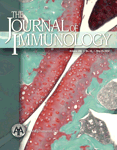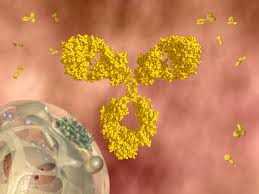J. Immunol:日开发新方法可判断多发性硬化症疗效
2012-05-19 蓝建中 新华网
近日,日本大阪大学和理化学研究所的研究小组在新一期《免疫学期刊》(The Journal of Immunology)上报告说,他们开发出一种血液检测方法,能够提前判断常用治疗药物培他干扰素对多发性硬化症患者是否有效。 多发性硬化症是一种中枢神经系统疾病,患者自身免疫细胞会错误攻击神经元髓鞘,造成患者出现视觉障碍、肌肉无力等症状。通常对多发性硬化症患者都采用注射培他干扰素进行治疗。&nb
近日,日本大阪大学和理化学研究所的研究小组在新一期《免疫学期刊》(The Journal of Immunology)上报告说,他们开发出一种血液检测方法,能够提前判断常用治疗药物培他干扰素对多发性硬化症患者是否有效。
多发性硬化症是一种中枢神经系统疾病,患者自身免疫细胞会错误攻击神经元髓鞘,造成患者出现视觉障碍、肌肉无力等症状。通常对多发性硬化症患者都采用注射培他干扰素进行治疗。
研究人员对约60名患者进行了调查,发现这种治疗方法对三分之一的患者并无效果。研究人员从这些治疗无效的患者血液中检测到一种名为“Semaphorin 4A”的蛋白质含量较高。这种蛋白质通常应附着在细胞表面,吸引周围的免疫细胞,不知为何脱离细胞大量进入血液。血液中这种蛋白质含量高的患者,硬化症症状在药物治疗后似乎还加重了。
研究人员,去年也出现了治疗多发性硬化症的新药物。这种蛋白质的血液检查只需半日,简单易行,有助于患者更早地选用适合自身的治疗药物和方法。(生物谷Bioon.com)

doi:10.4049/?jimmunol.1102023
PMC:
PMID:
Elevation of Sema4A Implicates Th Cell Skewing and the Efficacy of IFN-β Therapy in Multiple Sclerosis
Yuji Nakatsuji*,1, Tatsusada Okuno*,?,1, Masayuki Moriya*, Tomoyuki Sugimoto?, Makoto Kinoshita*, Hyota Takamatsu?, Satoshi Nojima?, Tetsuya Kimura?, Sujin Kang?, Daisuke Ito?, Yukinobu Nakagawa?, Toshihiko Toyofuku?, Kazushiro Takata*, Misa Nakano§, Masato Kubo?, Sinobu Suzuki‖, Akiko Matsui-Hasumi?‖, Ayako Uto-Konomi?‖, Atsushi Ogata#, Hideki Mochizuki*, Saburo Sakoda** and Atsushi Kumanogoh?#
Multiple sclerosis (MS) is a demyelinating autoimmune disease of the CNS and a leading cause of lasting neurologic disabilities in young adults. Although the precise mechanism remains incompletely understood, Ag presentation and subsequent myelin-reactive CD4+ T cell activation/differentiation are essential for the pathogenesis of MS. Although semaphorins were initially identified as axon guidance cues during neural development, several semaphorins are crucially involved in various phases of immune responses. Sema4A is one of the membrane-type class IV semaphorins, which we originally identified from the cDNA library of dendritic cell (DC). Sema4A plays critical roles in T cell activation and Th1 differentiation during the course of experimental autoimmune encephalomyelitis, an animal model of MS; however, its pathological involvement in human MS has not been determined. In this study, we report that Sema4A is increased in the sera of patients with MS. The expression of Sema4A is increased on DCs in MS patients and shed from these cells in a metalloproteinase-dependent manner. DC-derived Sema4A is not only critical for Th1 but also for Th17 cell differentiation, and MS patients with high Sema4A levels exhibit Th17 skewing. Furthermore, patients with high Sema4A levels have more severe disabilities and are unresponsive to IFN-β treatment. Taken together, our results suggest that Sema4A is involved in the pathogenesis of MS by promoting Th17 skewing.
本网站所有内容来源注明为“梅斯医学”或“MedSci原创”的文字、图片和音视频资料,版权均属于梅斯医学所有。非经授权,任何媒体、网站或个人不得转载,授权转载时须注明来源为“梅斯医学”。其它来源的文章系转载文章,或“梅斯号”自媒体发布的文章,仅系出于传递更多信息之目的,本站仅负责审核内容合规,其内容不代表本站立场,本站不负责内容的准确性和版权。如果存在侵权、或不希望被转载的媒体或个人可与我们联系,我们将立即进行删除处理。
在此留言














#新方法#
56
#硬化症#
67
#多发性#
81